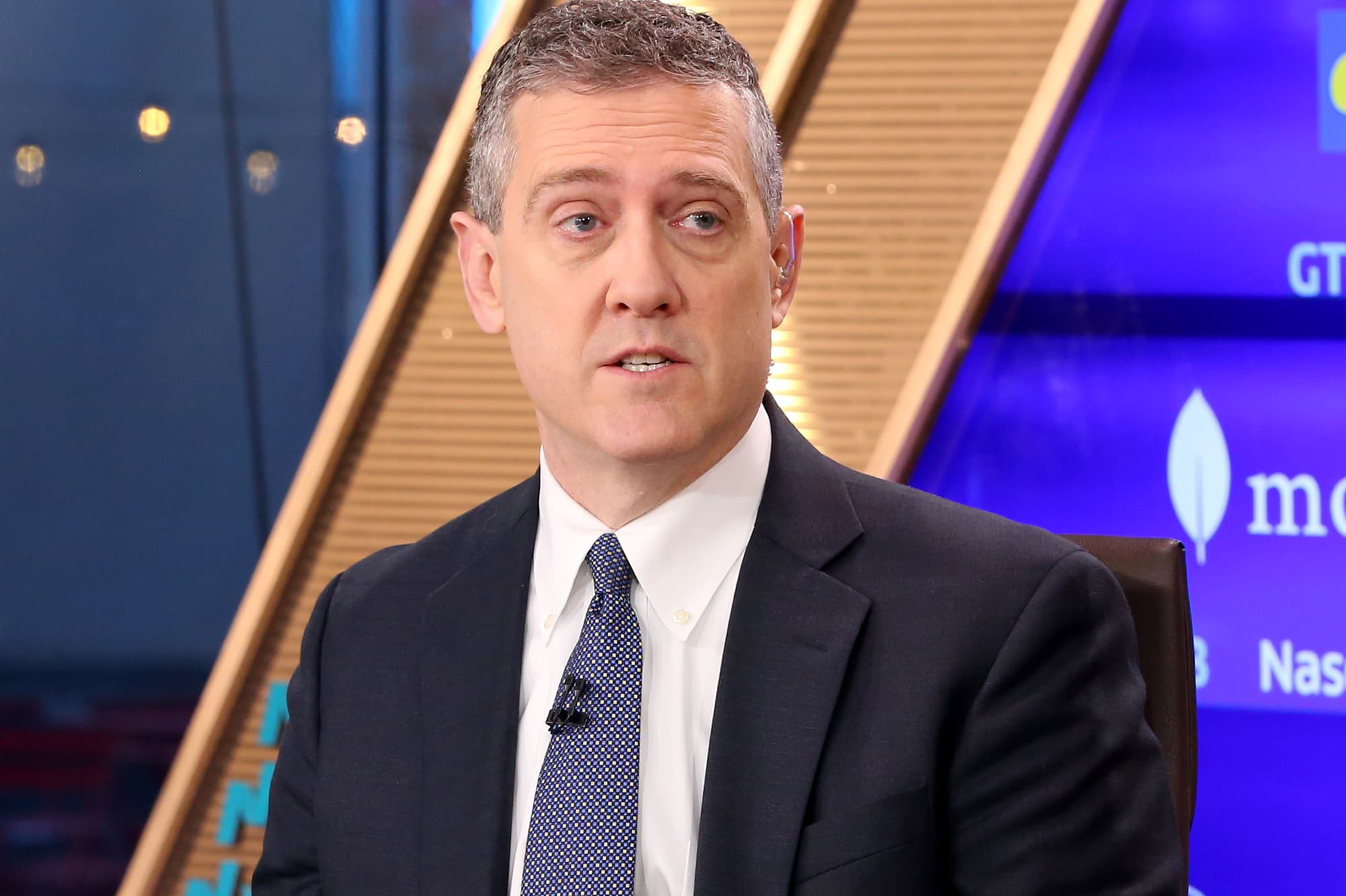Products You May Like
St. Louis Federal Reserve President James Bullard made his case for a rapid move higher in interest rates, saying Monday that the central bank needs to react to accelerating inflation.
“I do think we need to front-load more of our planned removal of accommodation than we would have previously. We’ve been surprised to the upside on inflation. This is a lot of inflation,” Bullard told CNBC’s Steve Liesman during a live “Squawk Box” interview.
“Our credibility is on the line here and we do have to react to the data,” he added. “However, I do think we can do it in a way that’s organized and not disruptive to markets.”
Those comments came after Bullard rattled markets last week by saying he thinks the Fed should raise its benchmark short-term borrowing rate a full percentage point by July. The position, in a Bloomberg News interview, sent stocks on a volatile ride and caused futures markets to price in as many as seven quarter-percentage-point hikes by the end of 2022.
Along with that, markets are now tilting to a 50 basis point, or 0.5 percent point, increase at the March meeting.
“I think my position is a good one, and I’ll try to convince my colleagues that it’s a good one,” Bullard told CNBC.
Stock market futures were mildly lower Monday morning as he spoke, rising from previous levels on some encouraging news out of the Russia-Ukraine hostilities.
While virtually all officials on the Federal Open Market Committee have expressed the desire to start raising rates in March, Bullard has been perhaps the most hawkish. Several other officials have said they think a quarter-point move at the upcoming meeting would suffice.
“History tells us with Fed policy that abrupt and aggressive action can actually have a destabilizing effect on the very growth and price stability we’re trying to achieve,” San Francisco Fed President Mary Daly said Sunday on CBC’s “Face the Nation.” “So, what I would favor is moving in March and then watching, measuring, being very careful about what we see ahead of us and then taking the next interest rate increase when it seems the best place to do that.”
But Bullard insisted that inflation has been running hot for months and the Fed needs to be forceful in using its tools to control price increases.
The consumer price index for January showed a 12-month increase of 7.5%, even more than Wall Street estimates and continuing a pattern that began in the back half of 2021.
“My interpretation was not so much that report alone, but the last four reports taken in tandem have indicated that inflation is broadening and possibly accelerating in the U.S. economy,” Bullard said.
Even with strong inflation gains, real incomes have been mostly declining as inflation is outpacing the rise in average hourly earnings.
“The inflation that we’re seeing is very bad for low- and moderate-income households,” he said. “People are unhappy, consumer confidence is declining. This is not a good situation. We have to reassure people that we’re going to defend our inflation target and we’re going to get back to 2%.”
Markets will get a look later this week into Fed thinking when the FOMC releases minutes from its January meeting. One area of interest will be in how the central bank will begin reducing the nearly $9 trillion in asset holdings, which doubled during the pandemic as the Fed bought up trillions in Treasurys and mortgage-backed securities.
Despite the inflation surge, the Fed intends to buy $20 billion more of Treasurys over the next month along with nearly $28 billion in MBS, before ending the program in March.
Bullard said he’d like to see a reduction in the bond holdings to begin in the second quarter with “some plan B in our pocket” where the Fed might actually sell the assets outright rather than letting proceeds run off passively.
